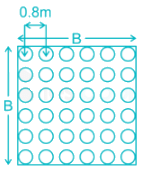Test: Soil Mechanics- 8 - Civil Engineering (CE) MCQ
10 Questions MCQ Test - Test: Soil Mechanics- 8
Match the List – I (Boring methods) with List-II (Field conditions) and select the correct answer using the codes given below the lists:
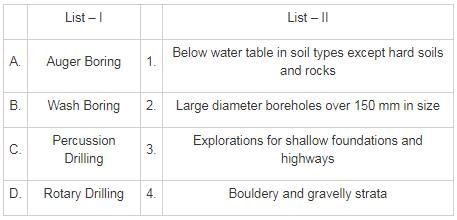

Consider the following statements if soil is treated with lime.
1. Decrease in shrinkage limit
2. Increase in plastic limit
3. Decrease in liquid limit
4. Flocculation of clay particles
Which of the statements given above are correct?
Which of the followings soil sample may be used to determine consistency limit of the soil?
A sampling tube has an inner diameter and outside diameter as shown in the figure below.
D1 = 75 mm
D2 = 80 mm
D3 = 77 mm
D4 = 78 mm
The inside clearance (%) of the samples is
Consider the following statements:
P. For a clay layer, the net ultimate bearing capacity (By Skempton) at the base of the footing is independent of the cohesion of the soil.
Q. If the depth of the strip footing is equal to the width of the footing, then the value of bearing capacity factor (Nc) by skempton is taken to be 6.0.
R. The theory given by Skempton for net ultimate bearing capacity computations is valid for shallow footings only.
S. Local shear failure occurs in soft clays and loose sands.
Identify the correct option:
If the rectangular footing is loaded with eccentric loads having an eccentricity (ex) and (ey) as shown in the figure below, then the effective area taken to calculate the ultimate bearing capacity of soil will be ______ m2
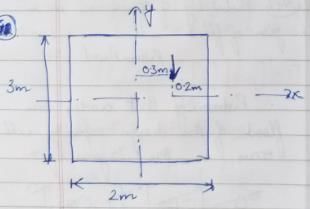
A rectangular footing is located at a depth of 1.5 m below the ground surface. It is required to carry the safe load of 1200 kN at the base of the footing. Calculate the area of the footing at the base in m2. Take factor of safety of 2.5 and bearing capacity factors as NC = 38, Nq = 23 and Nγ = 21. Assume water table at a great depth. Use Terzaghi’s ultimate bearing capacity equation. Assume the length to width ratio of the footing to be 1.5. Cohesion c = 100 kN/m2 and unit weight of soil to be 19 kN/m3.
A 4m × 3m raft is provided at a depth of 3 m below the ground surface in a purely cohesive soil such that the ultimate bearing capacity by Terzaghi’s is given by 1450kN/m2. The net ultimate bearing capacity by Skempton is _______kN/m2.
Assume Bearing capacity factor by Terzaghi to be: NC = 5.7, Nq = 1.0. Unit weight of clay layer to be 19 kN/m3
A 12 long reinforced concrete pile of diameter 450 mm was driven by drop hammer having total mass of 24000 kg and having an effective fall of 0.9 cm. The average penetration for the last five blows was recorded as 0.6 cm per blow. If the total elastic compression is 2.3 cm, then the safe load on the pile will be _____ kN.
Assume coefficient of restitution and factor of safety to be 0.30 and 2 respectively. Use Hiley’s formula.
Take γconcrete = 25 kN/m3. Efficiency of hammer (ηn) = 1.0.
36 Piles are arranged in a square pattern which is embedded in the clayey soil. The shear strength at the base of the pile is 200 kN/m2 and the average shear strength over the depth of the pile is 130 kN/m2. If the Diameter and length of the pile are 0.4 m and 12 m respectively, the safe load that the pile group can carry will be _______ kN. Assume, centre to centre spacing between the pile = 0.8 m, Adhesion factor (α) = 0.50 and Factor of safety = 3








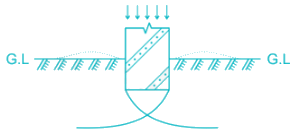




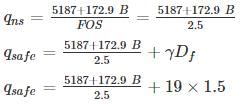


 C × 5.7 + 19 × 3 × 1.0 + 0
C × 5.7 + 19 × 3 × 1.0 + 0





